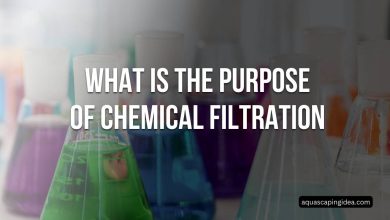How to Remove Nitrates from Aquarium Water?
Maintaining a thriving aquarium is a delicate balance of art and science. One of the most crucial aspects of aquarium care is managing water quality, and a common challenge faced by both novice and experienced aquarists is the presence of nitrates. These pesky compounds can wreak havoc on your aquatic ecosystem if left unchecked. In this comprehensive guide, we’ll dive deep into the world of nitrates, exploring their sources, impacts, and most importantly, how to effectively remove them from your aquarium water.
Whether you’re a seasoned aquarium enthusiast or just starting your journey into the fascinating world of underwater habitats, this article will equip you with the knowledge and tools to keep your aquatic friends happy and healthy. So, let’s plunge in and uncover the secrets to crystal-clear, nitrate-free aquarium water!
Understanding Nitrates in Aquariums
What Are Nitrates?
Nitrates (NO3-) are compounds consisting of one nitrogen atom and three oxygen atoms. In the context of aquariums, nitrates are the end product of the nitrogen cycle, a crucial biological process that occurs in all aquatic environments.
The Nitrogen Cycle: A Brief Overview
To truly understand nitrates, we need to grasp the basics of the nitrogen cycle:
- Ammonia (NH3) is produced by fish waste, uneaten food, and decaying plant matter.
- Beneficial bacteria convert ammonia into nitrites (NO2-).
- Another group of bacteria then converts nitrites into nitrates (NO3-).
While nitrates are less toxic than ammonia or nitrites, they can still cause problems in high concentrations.
Sources of Nitrates in Aquariums
Nitrates can accumulate in your aquarium from various sources:
- Biological waste: Fish excrement and uneaten food decompose, releasing nitrogen compounds.
- Tap water: Some municipal water supplies contain nitrates.
- Overfeeding: Excess food leads to more waste and, consequently, more nitrates.
- Overcrowding: Too many fish in a tank produce more waste than the system can handle.
- Inadequate maintenance: Infrequent water changes allow nitrates to build up over time.
The Impact of High Nitrate Levels
While fish can tolerate some nitrates, high levels can lead to various problems:
- Stress on fish: Elevated nitrates can weaken fish immune systems, making them more susceptible to diseases.
- Algae blooms: Nitrates act as fertilizer for algae, potentially leading to unsightly and harmful algae growth.
- Reduced oxygen levels: High nitrate levels can decrease oxygen saturation in the water.
- Stunted growth: Fish exposed to high nitrates may experience slower growth rates.
- Reproductive issues: Excessive nitrates can interfere with fish breeding and egg hatching.
Testing for Nitrates
Before you can effectively remove nitrates, you need to know their current levels in your aquarium. Regular testing is crucial for maintaining a healthy aquatic environment.
Types of Nitrate Tests
- Liquid test kits: These are the most common and generally most accurate for home use. They involve adding reagents to a water sample and comparing the resulting color to a chart.
- Test strips: While less accurate than liquid tests, these are quick and easy to use. You simply dip the strip in the aquarium water and compare it to a color chart.
- Digital testers: These electronic devices provide precise readings but are more expensive and may require calibration.
How to Perform a Nitrate Test
Here’s a step-by-step guide to using a typical liquid test kit:
- Rinse the test tube with aquarium water.
- Fill the tube with the specified amount of aquarium water (usually 5ml).
- Add the prescribed number of drops of each reagent.
- Cap the tube and shake as directed (usually for about 1 minute).
- Wait for the color to develop (typically 5 minutes).
- Compare the resulting color to the provided chart to determine the nitrate level.
Interpreting Nitrate Test Results
Nitrate levels are typically measured in parts per million (ppm). Here’s a general guide to interpreting the results:
| Nitrate Level (ppm) | Interpretation |
|---|---|
| 0-10 | Excellent |
| 10-20 | Good for most aquariums |
| 20-40 | Acceptable for hardy fish, but take action |
| 40-80 | Dangerous, immediate action required |
| 80+ | Toxic, urgent action needed |
Remember, some sensitive species may require even lower nitrate levels, so always research the specific needs of your aquatic inhabitants.
Methods to Remove Nitrates from Aquarium Water
Now that we understand what nitrates are and how to test for them, let’s explore various methods to remove these compounds from your aquarium water. We’ll start with preventative measures and then move on to active removal techniques.
Preventative Measures
1. Proper Tank Maintenance
Regular maintenance is your first line of defense against nitrate buildup:
- Regular water changes: Aim to change 10-20% of the water weekly. This dilutes nitrates and replenishes essential minerals.
- Gravel vacuuming: Remove debris from the substrate during water changes to prevent organic matter from decomposing and producing more nitrates.
- Filter maintenance: Clean or replace filter media as recommended to ensure efficient biological filtration.
2. Appropriate Stocking Levels
Avoid overcrowding your tank:
- Research the adult size and waste production of your fish species.
- Follow the “one inch of fish per gallon of water” rule as a general guideline, but adjust based on species needs and filtration capacity.
- Consider the bioload of your fish when planning your aquarium population.
3. Proper Feeding
Overfeeding is a common cause of nitrate buildup:
- Feed small amounts 2-3 times daily rather than one large feeding.
- Only provide what your fish can consume in 2-3 minutes.
- Remove uneaten food after feeding.
4. Live Plants
Aquatic plants are natural nitrate consumers:
- Fast-growing plants like hornwort, water sprite, and duckweed are particularly effective at absorbing nitrates.
- Ensure proper lighting and CO2 levels to promote plant growth.
- Regularly trim and remove excess plant matter to prevent it from decomposing in the tank.
Active Nitrate Removal Methods
1. Chemical Filtration
Various chemical media can help remove nitrates:
- Zeolite: This natural mineral can absorb ammonia, which indirectly reduces nitrate production.
- Activated carbon: While primarily used for removing odors and discoloration, it can also help reduce organic compounds that lead to nitrate formation.
- Nitrate-specific resins: These specialized media are designed to directly remove nitrates from water.
2. Biological Filtration
Enhance your biological filtration to process nitrogen compounds more efficiently:
- Deep sand beds: In marine aquariums, deep sand beds (4-6 inches) can harbor anaerobic bacteria that convert nitrates into harmless nitrogen gas.
- Live rock: In reef tanks, live rock provides a home for beneficial bacteria that aid in the nitrogen cycle.
- Ceramic bio-media: These porous materials provide a large surface area for beneficial bacteria to colonize.
3. Protein Skimmers
While primarily used in saltwater aquariums, protein skimmers can help reduce nitrates by removing organic compounds before they break down:
- Venturi skimmers: Use air bubbles to create foam that traps organic matter.
- Needle wheel skimmers: Employ a special impeller to create a fine mist of bubbles for efficient protein removal.
4. Reverse Osmosis (RO) Systems
For a more drastic approach, consider using RO water for water changes:
- RO systems remove almost all impurities, including nitrates, from water.
- Remember to remineralize RO water before adding it to your aquarium.
5. Algae Scrubbers
Harness the power of algae to remove nitrates:
- Create a separate compartment or sump where algae can grow freely.
- Provide intense lighting to promote algae growth.
- Regularly harvest the algae to remove the absorbed nitrates from the system.
6. Nitrate-Reducing Bacteria Products
Some commercial products contain bacteria strains that can convert nitrates into nitrogen gas:
- These products often require a separate reactor or can be added directly to the aquarium.
- Follow the manufacturer’s instructions carefully for best results.
7. Vodka Dosing (for experienced aquarists only)
This advanced method involves carefully dosing small amounts of vodka or other carbon sources to feed bacteria that consume nitrates:
- Only attempt this method if you’re experienced and can closely monitor your water parameters.
- Start with very small doses and increase gradually.
- Be prepared to do water changes if parameters shift unexpectedly.
Implementing a Nitrate Reduction Plan
Now that we’ve explored various methods to remove nitrates, let’s discuss how to implement an effective nitrate reduction plan for your aquarium.
Step 1: Assess Your Current Situation
- Test your nitrate levels using a reliable test kit.
- Evaluate your current maintenance routine.
- Consider the size of your tank, number of fish, and type of aquarium (freshwater, saltwater, planted, etc.).
Step 2: Set Realistic Goals
Determine an appropriate target nitrate level based on your aquarium type and inhabitants. For most freshwater aquariums, aim for less than 20 ppm. Reef tanks may require even lower levels, often below 10 ppm.
Step 3: Choose Your Methods
Based on your assessment and goals, select a combination of preventative measures and active removal methods that suit your aquarium and lifestyle. Consider factors such as:
- Time commitment
- Budget
- Technical complexity
- Compatibility with your aquarium inhabitants
Step 4: Implement Changes Gradually
Sudden changes can stress your aquatic life. Introduce new methods slowly:
- Start with improving basic maintenance practices.
- Gradually introduce chemical or biological filtration methods.
- Monitor water parameters closely as you make changes.
Step 5: Monitor and Adjust
Regularly test your nitrate levels and observe your aquarium inhabitants:
- Keep a log of nitrate readings and any changes you’ve implemented.
- Be prepared to adjust your approach based on the results.
- Remember that it may take time to see significant improvements.
Step 6: Maintain Consistency
Once you’ve found an effective combination of methods:
- Stick to your maintenance schedule.
- Continue regular testing.
- Stay vigilant for any signs of stress in your fish or changes in plant health.
Frequently Asked Questions
Q1: How often should I test for nitrates?
A: For established aquariums, test weekly. If you’re cycling a new tank or dealing with nitrate issues, test more frequently, even daily.
Q2: Can I use plants to reduce nitrates in a saltwater aquarium?
A: While most aquatic plants are freshwater species, there are some marine macroalgae like Chaetomorpha that can help reduce nitrates in saltwater tanks.
Q3: Are nitrates harmful to all aquatic life equally?
A: No, tolerance levels vary. Generally, invertebrates and corals are more sensitive to nitrates than fish. Some fish, like goldfish, can tolerate higher levels, but it’s still best to keep nitrates low for overall health.
Q4: Can I use tap water for water changes if it contains nitrates?
A: It’s best to use low-nitrate water for changes. If your tap water contains nitrates, consider using RO water or purchasing pre-treated aquarium water.
Q5: How long does it take to see results from nitrate reduction methods?
A: This varies depending on the method and initial nitrate levels. Some changes, like water changes, show immediate results. Biological methods may take weeks to establish fully.
Conclusion
Managing nitrate levels in your aquarium is an ongoing process that requires patience, consistency, and a willingness to adapt. By understanding the sources of nitrates, implementing preventative measures, and employing active removal techniques, you can create a healthier, more vibrant aquatic environment for your underwater friends.
Remember, there’s no one-size-fits-all solution to nitrate management. What works best for your aquarium will depend on various factors, including tank size, stocking levels, and the specific needs of your aquatic inhabitants. Don’t be afraid to experiment with different methods, always monitoring closely and adjusting as needed.
As you embark on your journey to nitrate-free waters, keep in mind that maintaining an aquarium is not just a hobby—it’s a responsibility to the life forms under your care. Your efforts to manage nitrates contribute to the overall health and longevity of your aquatic ecosystem.


